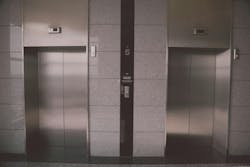Elevator regulations responsible for some of ballooning multifamily costs
By Peter Fabris, Contributing Editor
Codes and regulations for elevators in the United States are a key factor in inflating costs of multifamily development, argues a guest columnist in the New York Times.
“Elevators in North America have become over-engineered, bespoke, handcrafted and expensive pieces of equipment that are unaffordable in all the places where they are most needed,” writes Stephen Smith, founder and executive director of the Center for Building in North America. “Special interests here have run wild with an outdated, inefficient, overregulated system.”
The U.S. has around one million elevators, the same amount of much less populated European countries Italy and Spain. Spain, Smith writes, has less than half as many apartments as the U.S., but has many more elevators in smaller multifamily buildings.
European elevator regulations allow for smaller units that accommodate one wheelchair and another person. U.S. standards demand units twice that size and discourage or prevent modular construction that could reduce costs.
A basic four-stop elevator costs about $158,000 in New York City, compared with about $36,000 in Switzerland, Smith points out. In addition, elevator standards are harmonized across Europe, but in North America, nearly 100 separate boards and jurisdictions regulate elevator safety.
Smith’s proposed remedies include:
- Adopting the European elevator standard to open the market to more competition and parts
- Allowing smaller elevators for small apartment buildings that are at risk of having no elevator at all
- Consider accommodating less credentialed immigrants like those who work in construction, as in the European Union
- Improve vocational and technical training in public high schools to supply the elevator industry with more native-born workers
